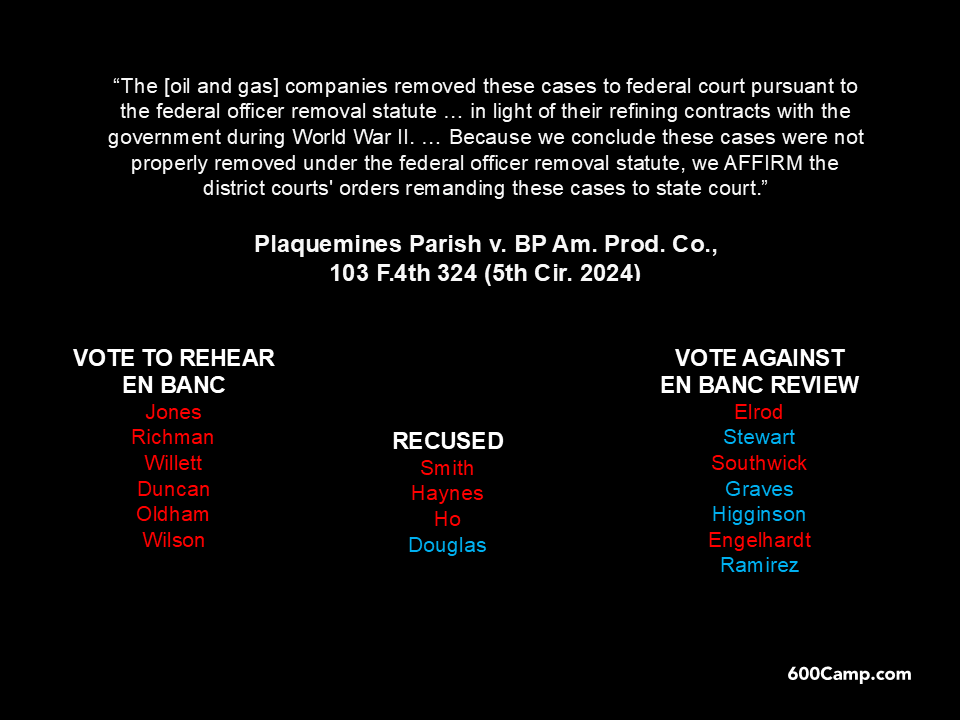In somewhat quirky language, the Texas Rules of Civil Procedure set this deadline to answer a lawsuit: “[O]n or before 10:00 a.m. on the Monday next after the expiration of twenty days after the date of service.” Despite the specific time stated, attorneys often calendar only the answer day, reasoning that a default judgment is unlikely in the space of a few hours. That practice failed in G&C Land v. Farmland Management Services, in which the plaintiff obtained a default judgment for over $3,000,000 at 10:15 on the critical Monday. No. 14-10046 (5th Cir. Sept. 23, 2014).
Plaintiff alleged fraud claims about the costs of an agricultural lease on a West Texas farm; the judgment granted recovery on those claims and trebled the damages under the DTPA. Two hours later, the defendant removed and then sought to set aside the default judgment. The district court ultimately granted that motion, along with a summary judgment for the defendant on the merits, and the Fifth Circuit affirmed.
Whilte the Fifth Circuit’s opinion is short and unpublished, the district court opinion (page 31 of the attached) goes into substantial detail about the default judgment. It found a lack of willfulness by the defendant, a lack of prejudice to the plaintiff, and meritorious defenses. As to willfulness, the district court noted that “fault is attributed only to Farmland’s counsel,” and held: “There is no dispute that Farmland failed to file an answer or remove before the deadline to answer in state court, which failure is attributed to the negligence of Farmland’s counsel. Yet, such negligence does not amount to willfulness . . . “ It also noted that while Farmland had timely answered after removal in accordance with the Federal rules, “this alone does not excuse Farmland’s failure to timely answer in state court.”
The federal courts’ decisions to set aside the default judgment are clearly correct – the (affirmed) summary judgment shows that the claim lacked merit, and plaintiff was not prejudiced by having to address the merits instead of resting on a 15-minute “gotcha.” And as to the deadline, the opinions do not address Rule 5 of the Texas Rule of Civil Procedure, which provides: “If any document is sent to the proper clerk by first-class United States mail in an envelope or wrapper properly addressed and stamped and is deposited in the mail on or before the last day for filing same, the same, if received by the clerk not more than ten days tardily, shall be filed by the clerk and be deemed filed in time (emphasis added).” A serious argument says that the state court’s speedy grant of a default judgment did not allow Rule 5 a chance to function as intended.
Nevertheless, the district court faulted defense counsel for not answering before 10:00, and used the word “negligence” to describe what happened. Had the facts been different – a stronger claim, a change of position in reliance on the judgment – the decision could have been closer and counsel’s situation would have become more awkward. In light of the facts of this case, defense counsel should be mindful of the 10:00 AM deadline in the rules, and factor it into their calendaring system.
A similar article about this case appeared in a recent Texas LawBook.
 The en banc Fifth Circuit overruled an obsolete precedent about removal, as follows:
The en banc Fifth Circuit overruled an obsolete precedent about removal, as follows:












































